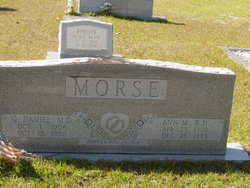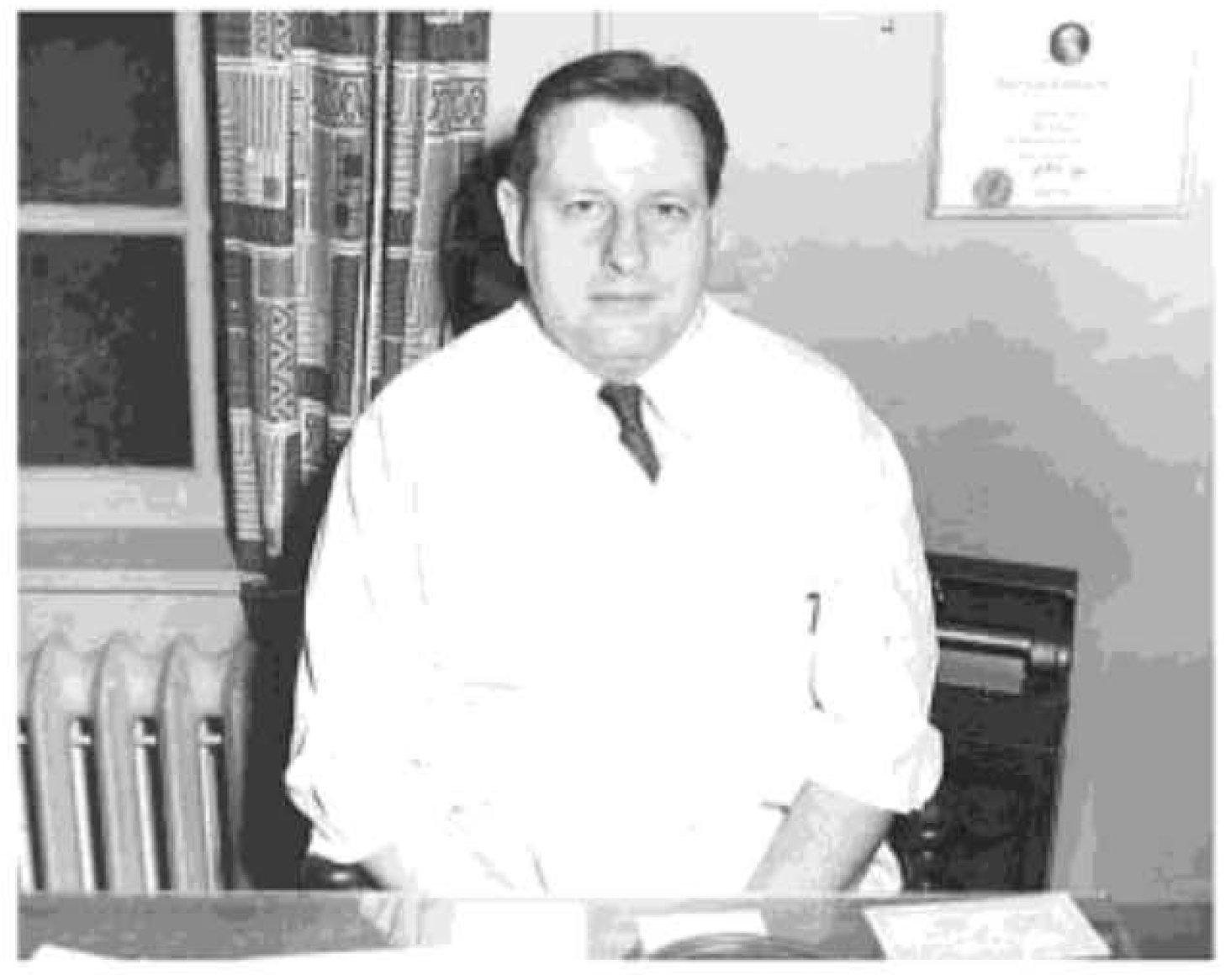Early in his career, Dr. Dan was in private practice and held an instructorship at Ohio State University Medical School. He was an examining physician at the Columbus Tuberculosis Clinic. He contributed greatly to the understanding of TB and other chest diseases and their treatment. During WWII, Dr. Dan was in the Army Medical Corps, stationed at Camp Shelby in Hattiesburg, Mississippi. After military service, he went on to become the medical director and superintendent of the Peoria Municipal Tuberculosis Sanitarium in Peoria, Illinois, working there for 26 years until his retirement in 1971.
Throughout his life, Dr. Dan's research and the publication of his findings brought him both personal satisfaction and enormous professional respect. While in Peoria, his lifelong interest in archaeology resurfaced and, combined with his expertise in diseases of the chest, steered him toward a second research career as a very highly regarded paleopathologist.
As if those professional contributions weren't more than enough for one lifetime, Dr. Dan went on to a third career, one that helped bring law enforcement and criminal investigations into the modern age. He literally wrote the book on forensic archeology for the Florida Department of Law Enforcement and developed a course of study for the field-training of law enforcement personnel. The techniques taught by Dr. Dan called for clandestine graves to be excavated using archeological-type methods in order to best preserve the remains and accompanying evidence. Prior to this type of training coming into common use in law enforcement, it was not uncommon for human skeletal remains to be hastily collected at crime scenes without adequate regard for the preservation of evidence.
Dr. Dan's research also advanced the understanding of postmortem interval, another important contribution to the field.
His contribution to the nascent field of forensic anthropology has had enormous and enduring benefits, far and wide, and have brought a measure of peace to the families of murder victims. Skeletal remains and crime scene evidence collected under his supervision and/or using the methods learned from him at Florida State University (or from his published materials) has led to the identification of countless victims and to the successful prosecution of the individuals responsible for those deaths. In some cases, victims remained unidentified for decades, but thanks to the careful methods of collection and preservation that Dr. Dan taught, some of those remains have finally been identified using cutting-edge, modern DNA technology, decades after Dr. Dan's death. This is his lasting legacy and to many, many families, his greatest contribution of all.
NOTE: This biographical information is derived from several sources, mainly his obituary, old newspaper clippings, and a published bio by Jerome C. Rose and Dolores L. Burke called "Dr. Dan: The Life of George Daniel Morse." I am not a scientist, nor a professional in any of the fields in which Dr. Dan excelled; I apologize if I got any of the facts wrong or otherwise misstated any of this information. It was very important to me that I try to get this bio right because my family is one of the many that benefitted from Dr. Dan's contributions to crime scene forensics. If any corrections are needed to this bio, please contact me using the SUGGEST EDITS button on this memorial page. Thank you!
Early in his career, Dr. Dan was in private practice and held an instructorship at Ohio State University Medical School. He was an examining physician at the Columbus Tuberculosis Clinic. He contributed greatly to the understanding of TB and other chest diseases and their treatment. During WWII, Dr. Dan was in the Army Medical Corps, stationed at Camp Shelby in Hattiesburg, Mississippi. After military service, he went on to become the medical director and superintendent of the Peoria Municipal Tuberculosis Sanitarium in Peoria, Illinois, working there for 26 years until his retirement in 1971.
Throughout his life, Dr. Dan's research and the publication of his findings brought him both personal satisfaction and enormous professional respect. While in Peoria, his lifelong interest in archaeology resurfaced and, combined with his expertise in diseases of the chest, steered him toward a second research career as a very highly regarded paleopathologist.
As if those professional contributions weren't more than enough for one lifetime, Dr. Dan went on to a third career, one that helped bring law enforcement and criminal investigations into the modern age. He literally wrote the book on forensic archeology for the Florida Department of Law Enforcement and developed a course of study for the field-training of law enforcement personnel. The techniques taught by Dr. Dan called for clandestine graves to be excavated using archeological-type methods in order to best preserve the remains and accompanying evidence. Prior to this type of training coming into common use in law enforcement, it was not uncommon for human skeletal remains to be hastily collected at crime scenes without adequate regard for the preservation of evidence.
Dr. Dan's research also advanced the understanding of postmortem interval, another important contribution to the field.
His contribution to the nascent field of forensic anthropology has had enormous and enduring benefits, far and wide, and have brought a measure of peace to the families of murder victims. Skeletal remains and crime scene evidence collected under his supervision and/or using the methods learned from him at Florida State University (or from his published materials) has led to the identification of countless victims and to the successful prosecution of the individuals responsible for those deaths. In some cases, victims remained unidentified for decades, but thanks to the careful methods of collection and preservation that Dr. Dan taught, some of those remains have finally been identified using cutting-edge, modern DNA technology, decades after Dr. Dan's death. This is his lasting legacy and to many, many families, his greatest contribution of all.
NOTE: This biographical information is derived from several sources, mainly his obituary, old newspaper clippings, and a published bio by Jerome C. Rose and Dolores L. Burke called "Dr. Dan: The Life of George Daniel Morse." I am not a scientist, nor a professional in any of the fields in which Dr. Dan excelled; I apologize if I got any of the facts wrong or otherwise misstated any of this information. It was very important to me that I try to get this bio right because my family is one of the many that benefitted from Dr. Dan's contributions to crime scene forensics. If any corrections are needed to this bio, please contact me using the SUGGEST EDITS button on this memorial page. Thank you!







